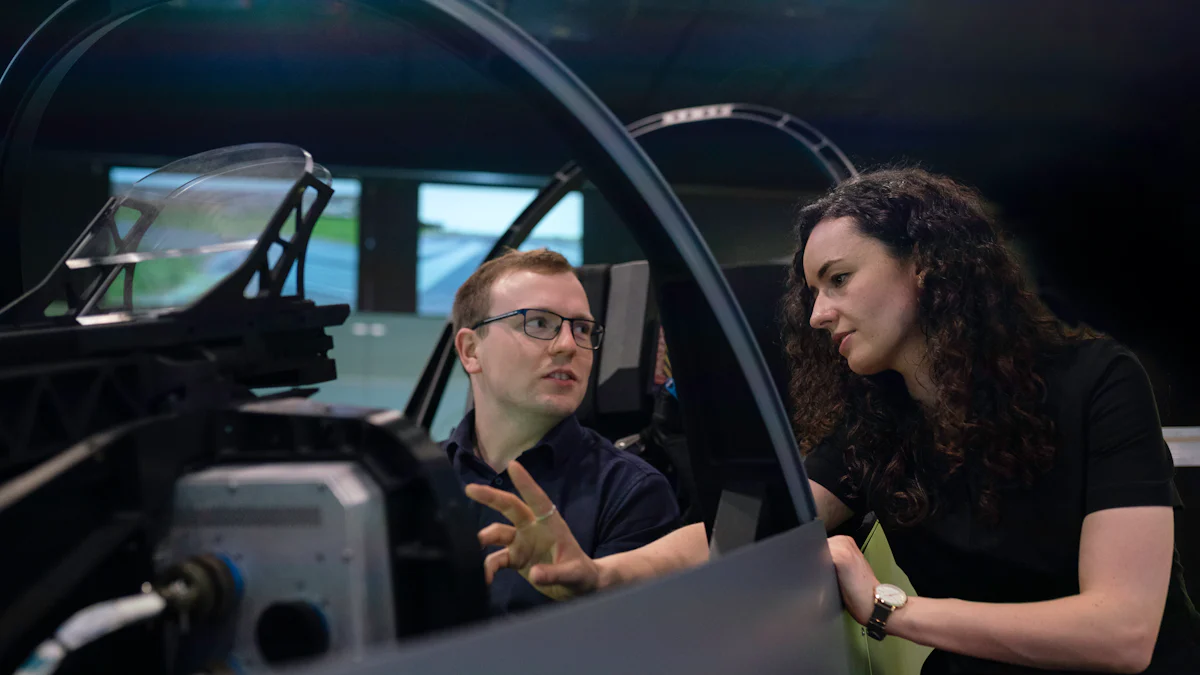Understanding the Benefits of CAE Analysis in Die Casting Design

What is CAE Analysis in Die Casting?
Definition and Role of CAE
Computer-aided engineering, or CAE, refers to the use of advanced software tools to analyze and improve engineering designs. In die casting, CAE plays a critical role in predicting how materials will behave during the casting process. You can use CAE to identify potential issues, such as defects or weak points, before production begins. This approach ensures that your product design meets quality standards while reducing the risk of costly errors. By relying on CAE, you gain a deeper understanding of how your design will perform under real-world conditions.
Integration of CAE in the Design Process
The integration between CAD and CAE has transformed how engineers approach die casting. CAD, or computer-aided design, allows you to create detailed 3D models of your product. When combined with CAE, these models undergo rigorous analysis to test their performance. This integration streamlines the design process by enabling you to make adjustments early, avoiding delays later. For example, 3D CAE tools can simulate how molten metal flows into a mold, helping you refine the design for better results. This seamless connection between CAD and CAE ensures process improvements and enhances overall efficiency.
Simulation and Optimization in Die Casting CAE
Simulation is a cornerstone of die casting CAE. It allows you to visualize and predict how materials behave during casting. Common techniques include the volume of fluid method, which models turbulent flow and phase changes in the melt. Tools like the STAR-Cast module simulate air and melt flows inside molds, even in complex geometries. Smart meshing technologies further enhance accuracy by creating high-resolution meshes that capture steep temperature and velocity gradients. These simulations not only improve mold filling analysis but also support optimization by identifying the best design and process parameters. With engineering simulation, you can achieve higher precision and better product quality.
Key Benefits of Die Casting CAE

Enhanced Design Accuracy
Die casting CAE helps you achieve precise designs by identifying potential flaws early in the process. Through detailed analysis, you can predict how materials will behave under various conditions. For example, simulation tools allow you to visualize the flow of molten metal into molds. This insight ensures that your design meets performance requirements without trial-and-error methods. By using computer-aided engineering, you can refine every aspect of your product, from geometry to material selection. These improvements lead to better functionality and durability. With CAE, you gain confidence in your design's accuracy before production begins.
Cost and Time Savings
Integrating die casting CAE into your workflow reduces both costs and time. Traditional methods often involve multiple physical prototypes, which can be expensive and time-consuming. CAE eliminates this need by providing virtual simulations and analysis. You can test different scenarios and optimize your design without additional resources. This approach minimizes waste and shortens development cycles. For instance, by identifying defects during the analysis phase, you avoid costly rework later. The result is a streamlined process that delivers cost and time savings while maintaining high-quality standards.
Improved Product Quality
CAE ensures that your final product meets or exceeds quality expectations. Through advanced analysis and optimization, you can address issues like porosity, shrinkage, or weak points in the casting. Simulation tools allow you to test various parameters, such as temperature and pressure, to achieve the best results. These tools also help you maintain consistency across production batches. By leveraging die casting CAE, you can produce reliable and durable components. This focus on quality not only enhances customer satisfaction but also strengthens your reputation in the industry.
Increased Efficiency in the Design Process
Using CAE in die casting significantly improves the efficiency of your design process. By relying on advanced analysis tools, you can streamline every stage of development. This approach eliminates unnecessary steps and ensures that your workflow remains focused and productive.
One way CAE boosts efficiency is by reducing the need for physical prototypes. Instead of building and testing multiple versions of a product, you can use simulations to evaluate performance. These virtual tests allow you to identify and fix issues early, saving time and resources. For example, you can analyze how molten metal flows through a mold and adjust the design to prevent defects.
Another advantage is the ability to test multiple scenarios quickly. With CAE, you can explore different materials, temperatures, and pressures without interrupting the process. This flexibility helps you find the best parameters for your project. It also allows you to make informed decisions faster, keeping your timeline on track.
Efficiency is not just about speed. It’s about doing more with less effort. CAE tools help you achieve this by automating complex calculations and providing accurate results.
Collaboration also becomes easier with CAE. Engineers can share data and insights in real time, ensuring everyone stays aligned. This reduces miscommunication and keeps the project moving forward.
By integrating CAE into your workflow, you can optimize your design process, reduce delays, and deliver high-quality products faster.
Real-World Applications of Die Casting CAE

Industry Examples of CAE Success
Many industries have embraced die casting CAE to improve their manufacturing processes. The automotive sector, in particular, has seen remarkable results. Toyota Industries Corporation, in collaboration with Siemens, implemented AI-driven CAE tools in their die casting operations. This approach allowed them to monitor production in real time and predict defects before they occurred. As a result, Toyota achieved higher productivity and improved product quality.
The aerospace industry also benefits from CAE. Engineers use simulation tools to analyze how materials behave under extreme conditions. This ensures that components meet strict safety standards. Similarly, the electronics industry relies on CAE to design lightweight yet durable parts. These examples highlight how CAE transforms manufacturing across various fields.
Case Studies Highlighting Benefits
Real-world case studies demonstrate the tangible benefits of die casting CAE. One example involves a manufacturer facing issues with porosity in their castings. By using advanced simulation tools, they identified the root cause of the problem. The analysis revealed that uneven cooling rates were causing defects. Engineers optimized the mold design and adjusted process parameters to resolve the issue. This led to a significant reduction in scrap rates and improved overall efficiency.
Another case study focused on a company producing complex automotive components. Traditional methods failed to achieve the desired precision. By integrating CAE into their workflow, the team conducted detailed analysis and optimization. They simulated various scenarios to find the best design and material combination. The final product met all performance requirements while reducing production costs.
These success stories show how CAE empowers you to overcome challenges and achieve better results. Whether you aim to enhance quality, reduce waste, or streamline your process, CAE offers valuable solutions.
Integrating CAE into your die casting design offers significant advantages. You save costs by reducing the need for physical prototypes and avoid delays through early problem detection. The process becomes more efficient as simulations streamline workflows and eliminate unnecessary steps. These tools also drive improvements in product quality, ensuring durable and reliable components.
CAE empowers you to create innovative designs that meet performance standards. It provides the insights needed to refine every detail of your project. By adopting CAE tools, you can stay ahead in the competitive manufacturing landscape and deliver exceptional results.
Start exploring CAE solutions today to transform your die casting design process and achieve superior outcomes.
FAQ
1. What is the main purpose of CAE in die casting?
CAE helps you predict and solve design issues before production. It ensures your product meets quality standards by simulating real-world conditions. This reduces errors, saves costs, and improves efficiency.
2. Can CAE eliminate the need for physical prototypes?
Yes, CAE minimizes the need for physical prototypes. Virtual simulations allow you to test designs and optimize parameters without building multiple prototypes. This saves time and resources.
3. What industries benefit most from die casting CAE?
Automotive, aerospace, and electronics industries benefit significantly. CAE helps these sectors design lightweight, durable, and precise components while meeting strict performance and safety standards.
4. How does CAE improve product quality?
CAE identifies potential defects like porosity or shrinkage during the design phase. By optimizing parameters such as temperature and pressure, you can ensure consistent, high-quality production.
5. Are CAE tools difficult to use for beginners?
Modern CAE tools are user-friendly and include tutorials or support. With some training, you can quickly learn to simulate and analyze designs effectively. Many tools also offer intuitive interfaces for ease of use.
💡 Tip: Start with basic CAE software to build your skills before exploring advanced features.
See Also
Comprehensive Guide for CAD Design in Die Casting
Understanding Functional Testing in CNC and Die Casting
Finding Optimal Closing Force for Your Die Casting Product
Supplier's Guide to CBAM and Sustainable Casting Practices
Enhancing Diecast Product Longevity Through Electroplating Techniques
About Hunan Puka
Established in 2016 and based in Hunan, China, with a liaison point in Berlin, we are a Tier 2 supplier for the automobile industry. We specialize in the production of customized aluminum die-casting parts designed for machines with a closing force ranging from 280 to 800 tons, with subsequent manufacturing process CNC machining and surface treatment. Our commitment to quality is reflected in our accredited quality management system, certified by ISO9001:2015 and IATF16949:2016 standards.


